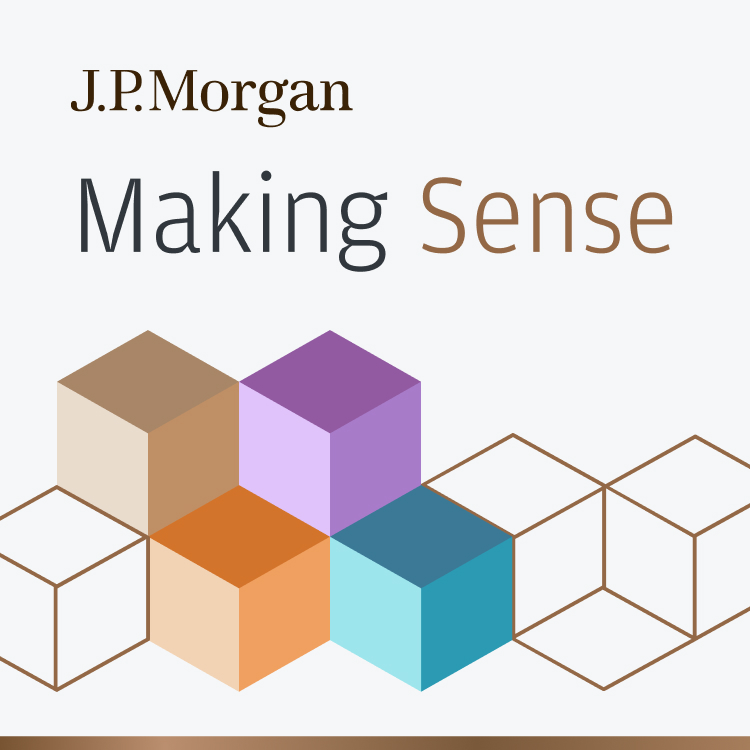[Music]
Amaury Guzman: Hello and welcome to What's The Deal?, our investment banking series on J.P. Morgan's Making Sense podcast. I'm your host today, Amaury Guzman, from our leveraged finance desk. Today I am joined by returning guest, Kevin Foley, our global head of capital markets at J.P. Morgan. And we're here to review the state of global capital markets. Kevin, thank you so much for joining us today.
Kevin Foley: Amaury, my pleasure. And thank you for having me.
Amaury Guzman: Absolutely. Before we get going on the various topics that we're gonna be reviewing today, why don't we set the stage for our listeners on mark to market macro performance since your most recent visit to the podcast? In your March episode, you recapped key takeaways from our global High Yield and Leveraged Finance conference. You pointed to a level of resiliency that the economy was demonstrating and the shifting outlook between soft and hard landing scenarios. How have these trends evolved since and as we look to close the first half of the year?
Kevin Foley: Sure. So I think it's been largely more of the same. We're kind of in this Goldilocks period where we're seeing the economic picture hang in there solidly, growth continues to be solid, can certainly see the consumer spend, seeing corporate earnings come in well. Inflationary data continues to look better, tracking more towards the Fed's target of 2%. While the Fed is on hold the market continues to be convinced about the robustness of the economic picture, given growth is this kind of, again, Goldilocks scenario, where not too hot, not too cold. We're seeing some slowdown, as expected. Not as severe as we expected. You're seeing financial conditions have eased, you're seeing the inflationary pressure come down. All that continues to be firmly in place. There are still questions out there, will we get close enough to the 2% that the Fed is gonna be in a position to actually cut later this year? Right now the market is pricing in a 75% chance at two cuts later in the year. The market has been dialing back its expectations, I think that's probably one of the surprises, and I'll separate from the economy in just the markets. The markets expectations coming into the year were probably 150 basis points of rate cuts, that's come down dramatically. We've seen less volatility in the markets than we would've expected as those expectations have shifted, but I think the emphasis has shifted towards the growth picture has been better than expected and stronger than expected. Employment, while loosening up a little bit, is still solid, consumer continues to spend. And we're seeing that some of that inflationary pressure ease, so I think that outweighs the expectations of what the Fed was gonna have to do on rates.
Amaury Guzman: So, just quickly touching on the rates point, the expected path for rates in the U.S. has moved materially. We also saw the ECB make the first move down. How do you see central bank-speak evolving in the second half of '24, and what impact will it have on the capital markets?
Kevin Foley: It's definitely been the highest item of scrutiny in 2024. What I have been surprised at is the lack of volatility that's been experienced in the markets as the expectation for rate cuts have come down. So, while the expectations were very high coming into the year, they have come way down, but we've rallied based on the fact that growth has remained more robust, inflationary pressures have eased, and getting back again to that Goldilocks environment that we've been talking about.
Amaury Guzman: Clearly (laughs) a, a good ride on the macro side. Now, if we pivot going into the product side of, of the house, why don't we start with equities? We recently had our colleague Keith Canton on the podcast, discussing the state of the IPO market. What's your outlook for IPO activity for the second half of '24, and expectations for early '25?
Kevin Foley: So as Keith mentioned on his podcast, activity has picked up significantly in the IPO market. We're up dramatically from a year ago. We're still well below the pre-COVID averages, so when you look at 2017 to 2019, you look at that what we'll call a normalized period for ECM and IPO activity, we're still below those levels by a significant amount. But we have seen deals getting done. It is a narrower market, you're seeing that in the equity performance in the S&P 500. Right now you’ve got the Magnificent 7 who are driving the performance. When you look at the S&P 500 it's up about 15%, if you were to take out those seven stocks you'd lose 600 basis points of that performance. You're looking at a weighting in the S&P 500 where, at the levels we haven't seen in probably about 25 years, where top 10 stocks make up almost 40% of the index. So it's a very concentrated narrow market, and you're seeing a similar dynamic in the IPO market. It's just probably a narrower bandwidth of the types of businesses that are getting done, right? It's going to be those businesses that are at profitability or near profitability, at cashflow positive or near cashflow positive, solid secular stories, fair sense of how it's going to perform if we do actually get an economic slowdown. There could be more IPO activity. There is a self-selection that goes on, whether people are willing to accept where the market is willing to transact and price deals right now. But it has been encouraging about the amount of activity that has been out there. The first half of the year has been stronger than probably most would've expected. Do we think that trend continues throughout the rest of the year? Not likely, is our expectations. Based on what we see today, you certainly have some factors later in the year that can cause periods where people are gonna be a little more cautious about going, with the elections coming up.
Amaury Guzman: I'm curious to get your thoughts about what you see further down the line into 2025 and maybe even into 2026.
Kevin Foley: As you look beyond '24, we see a nice pipeline building, right? We've had several years of muted activity, we were coming off a very heavy investment cycle from a private equity world, both venture and leverage buyout candidates, that there is a solid pipeline out there that can come to the market in '25 and '26. So we expect that's going to ramp, particularly as you get beyond some of the economic concerns, debate about where the Fed's going, get the presidential election in the U.S. behind us. All of those things are going to help in boosting that activity. And the very fact that we've just kind of a pent-up demand, if you will, in terms of there was a heavy investment cycle, there's gonna be more pressure on VCs and PE shops to return that money to their LPs, so there's gonna be a need for monetization events. So we expect all of those things to be a driver as we get into '25 and beyond.
Amaury Guzman: That sounds like a positive outlook. It's great to hear that deals are starting to get done, despite some healthy amount of discretion on the investor side after a long period of muted activity, if you may. Now, shifting to debt markets, we're seeing strong performance in high yield and leveraged loans, despite rates staying higher for longer than anticipated. Do you expect this activity sustaining in the back half of the year? And what about into early '25?
Kevin Foley: You're right, the activity has been higher than expected. A couple things in there, and rates are higher for longer. But importantly, when you look at the high yield market on a spread basis, we are 200 basis points inside the long term averages, long term non-recessionary average s- on a spread base for those, that indice. So that has been a key factor in bringing activity to the market. It is attractively priced, and we've been encouraging issuers to think about taking advantage of, given how attractive spreads are. 90% of the activity we've seen this year has been refinancing or repricing. So while there is ample capital out there, and volumes are up significantly from a year ago, most of that activity has just been recycling that capital. So while we have a lot of demand out there, with the lack of M&A calendar coming to the leveraged finance market, it's not sopping up that demand. So a little bit we're running in placed. Do we think the trends in refinancing and repricing activity will continue throughout the rest of the year. Hard to say. We're not anticipating that's the case, so we don't think the elevated volumes we're seeing right now are sustainable, unless we start to see a faster and bigger pickup in M&A activity.
Amaury Guzman: That’s really interesting. And what other factors may shape M&A activity?
Kevin Foley: Now, M&A has picked up from where it was a year ago, but we're still seeing a fair amount of gap between buyers and sellers, which is keeping the financing activity muted. We're encouraged about the green shoots that we're seeing. How quickly does all of that come to fruition? Hard to say. As we get later into the summer, we know more of that activity, if it does pick up or continues to pick up, is more likely gonna get pushed into '25. But we're still in a window where there's M&A deals that we're evaluating that come to market before the year is out. We're pleased the quality of the deals we're seeing. We're pleased with the pickup and dialogue that we're seeing. There has been this gap between buyers and sellers, in just a pure, "Where's the valuations and where can things get done?" And we're starting to see more meeting of the minds. So we're hopeful. We're not anticipating that is a huge event in 2024, and more likely a '25 pickup.
Amaury Guzman: Yes, Kevin, and to your point about running in place, recently we had Brian Tramontozzi on the podcast, our North America head of Leveraged Finance capital markets. He pointed out how about 40% of the loan market has an issue date of 2024, effectively meaning that almost half of the market has been either issued or refinanced this year and speaks to the level of the refinancing activity. So, it sounds like conditions in public markets across debt, equity, and some green shoots in M&A activity have had a good year so far. Turning quickly to direct lending, which the market and the press refer to colloquially as private credit, it's been a growing area of financings these days. It's not a concept that's new for J.P. Morgan. We've been making loans to businesses for years. Can you speak a little bit about what's behind the trend? How does J.P. Morgan uniquely support our clients with related financing activities in the private side?
Kevin Foley: As you said, we've been in the direct lending business since the 1800s. Private credit is here to stay. It's a dynamic in the market. But importantly from J.P. Morgan, the way we go about serving our clients has not changed. Our goal is always for our clients to be product agnostic, objective, and give them the best advice possible. And so, private credit will be another option on the page, if you will, of what their choices are in financing their capital structure. So we can do a syndicated loan. We can do a direct loan. We can do a high-yield bond. We can do a convertible bond. We're going to be product agnostic. That's what's best for our clients, allow them to make the best decision for whatever their business needs are, what their capital structure needs are, and making sure we're giving objective, consistent advice about it. That's always been our goal, and it will continue to be our goal. We're fortunate to be in the private credit business as well, and being able to offer that solution directly to our clients, and so we'll stay with this mantra of product-agnostic, objective advice, and making sure our clients get what's best for them.
Amaury Guzman: It's clear that we have a leadership position, and being able to advise agnostically across our platform, and I think it speaks to the value that we can deliver for our clients well within our platform. Now, Kevin, you spend a lot of time on the road meeting with C-level executives. From your conversations with CEOs and CFOs, what are they focused on, and what would you advise them to be focused on for the remainder of 2024?
Kevin Foley: There's the adage that the markets, a lot of times, leads the economy by six months, and if you apply that in this scenario, we're seeing the markets feel very strong and optimistic. I think we see encouragement from a lot of management teams, and honestly, looking across a lot of different industries, when you talk to a lot of the manufacturing management teams, they may have seen de-stocking in their business in the prior 18 months. It feels like they're starting to see some restocking go on. They're seeing the consumer continue to spend. They're seeing investment decisions being made. There are a lot of reasons for optimism, but there's a lot of reasons for caution too. Right? That there is still a relatively tight employment picture, and they're still feeling some of that pains from a wage prices. Raw materials, still seeing some of that price pressure in there. So a lot of the inflationary pressure that we've talked about over the past couple years very much still lingers in these businesses. And there are reasons to question whether the spending habits that we've seen out of the consumer are sustainable. We've definitely seen certain segments feeling a little bit of slowdown in it, whether consumers trading down to maybe eating out less, different ways of changing behavior that impacts how these businesses were forming. So, I'd say they're optimistic. There's reasons to be cautious, because there are flags out there. And I think a lot of management teams have been able to take actions, and reducing spend, positioning business to make sure they're well positioned for any downturn. If they feel okay, they are prepared for what's out there... I think it's the prepare for the worst, hope for the best, and a lot of them have done that. But, there's still things that hang in the balance. Are we actually going to see inflation truly get under control here? Is the Fed gonna be in a position to actually ease? There's geopolitical concerns, and there's ramifications that happen on that front from whatever happens in the geopolitical picture. We've got, obviously, an election happening. While most would say they feel like here, they can understand, we've got two very well-known candidates, but still, there's uncertainty around that. There's reasons for optimism, but there's also reasons to be cautious, and there's a level of uncertainty out there, but I think they've had the benefit of a lot of this being on the radar screen and trying to prepare their businesses.
Amaury Guzman: Yeah, certainly. It sounds like, despite some strategic positioning, in preparation for a lot of factors that are coming our way in the second half of the year, there's still a lot to be on the lookout for. I think this is a good place to wrap up. To recap, today we dived into the current state of global capital markets, explored trends in equity in the capital markets, private credit, examine regional dynamics, and the outlook for interest rates and M&A activity. Big thanks to Kevin for joining me today. It's always great to have you with us.
Kevin Foley: Thank you, Amaury, and I also wanted to say thank you to all our clients and partners out there, and appreciate all the trust you place in J.P. Morgan.
Amaury Guzman: Yep, certainly. And thank you to our listeners for tuning into another episode of What's The Deal? We hope you enjoyed this conversation. I'm Amaury Guzman. Until next time, thanks for listening.
Voiceover: Thanks for listening to What's The Deal? If you've enjoyed this conversation, we hope you'll review, rate, and subscribe to J.P. Morgan's Making Sense to stay on top of the latest industry news and trends. Available on Apple Podcasts, Spotify, Google Podcasts, and YouTube. To stay ahead of the curve. Sign up for J.P. Morgan's In Context newsletter, packed full of market views and expert insights, delivered straight to you. To subscribe, just visit jpmorgan.com/in-context. This material was prepared by the investment banking group of J.P. Morgan Securities LLC, and not the firm's research department. It is for informational purposes only, and is not intended as an offer or solicitation for the purchase, sale, or tender of any financial instrument.












